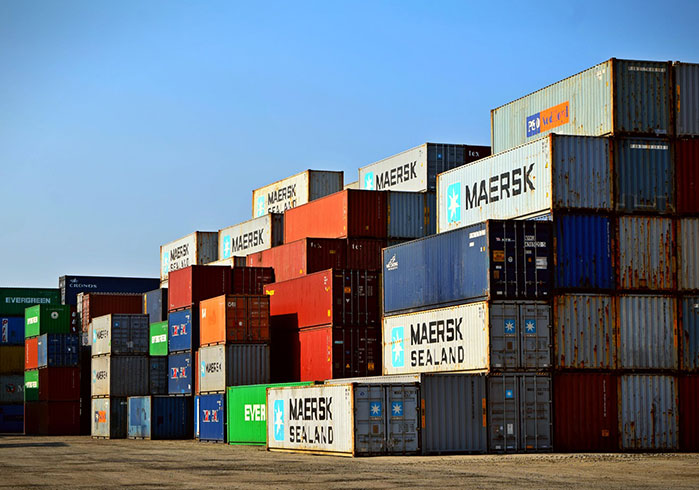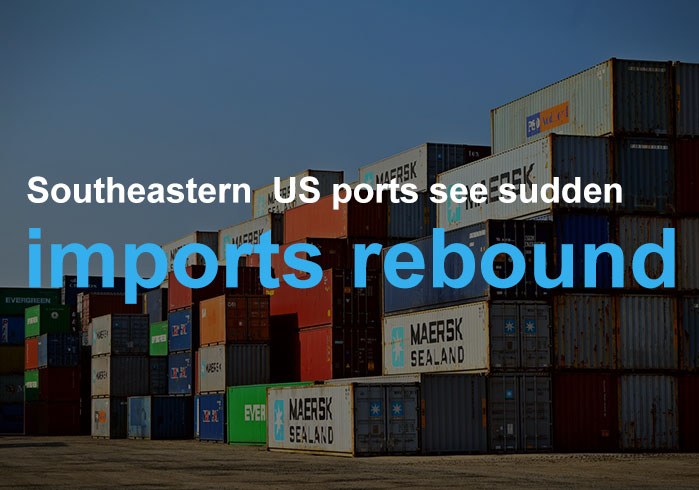
The latest statistics indicate that container volumes at the major Southeast and mid-Atlantic port gateways are rebounding. For example, both Charleston and Virginia are registering double-digit percentage sequential growth in August. Additionally, Savannah achieved its best single month ever in terms of container throughput.
Port officials say the sudden shift in cargo demand is the result of consumer demand for home furniture, home office equipment, and home improvement goods. Moreover, there has been a sharp rise in e-commerce. The main reason for this is that Americans continue to substitute spending on out-of-town vacations for better home experience.
The Shift in Cargo Demand
Statistics coming out of the market indicate the Georgia Ports Authority (GPA) handled more than 441,600 TEU in August compared with 437,747 TEU a year ago, a record for any month in Savannah’s history. Cargo volumes have been surging through the ports of Los Angeles and Long Beach since late July. This rise is driven primarily by imports of e-commerce goods and personal protective equipment from Asia.
There is significant evidence of changes in the market that will impact suppliers. For example, US imports from Asia in August increased by 9.8% when compared to the previous month. Moreover, this was a 13.4% increase when compared to the same month in the previous year.
Griff Lynch, the GPA CEO, had anticipated that August would be better than June and July. However, the months turned out to be record-breaking, to the surprise of some experts. Although economists had been predicting that some sectors would do well, they did not indicate that the increments in demand would overcome the fallout that arose due to the COVID-19 crisis.
European Trade
European trade has been slower to return to normal. Savannah is the only major US Southeast port to see its container throughput grow on a year-over-year basis in August. Nevertheless, its competitors have seen a strong rebound sequentially compared with the height of the pandemic. Port authorities expect volumes to remain strong through the end of this month. Despite this generalized optimism, the uncertainty surrounding the COVID-19 pandemic continues to cloud the outlook for the traditional peak ocean shipping season.
The Port of Virginia handled 247,349 TEU in August. This represents a decline of 4% when compared to the previous year. However, it is also an increase of 23% on the low point of May 2020 based on statistics from the Virginia Port Authority (VPA). John Reinhart, CEO of VPA argues that there are signs of an optimist upward trend. This is particularly encouraging in this volatile trading climate. He predicts that the month-on-month growth will continue through September. Beyond that, it is hard to predict.
Volumes flowing through the Port of Charleston fell 10% year over year to 208,837 TEU in August, according to the South Carolina Ports Authority (SCPA). However, this performance was still better than the height of the pandemic. This is when monthly volumes were down between 15% and 20% when compared with similar periods of the year in 2019.
Jim Newsome, the CEO of SCPA opined that the cargo volumes are yet to recover as quickly as needed because Charleston has less exposure to retail goods than other East Coast ports. That is why SCPA is not as focused on omnichannel retail when compared to similar ports. Instead, their focus is changing based on examples such as Walmart’s weekly announcement of a $21.6 million federal grant that SCPA will use to build out Ridgeville Commerce Park. This facility includes a 3 million-square-foot Walmart distribution center.
Charleston also has more exposure to European trade. This is a region that has struggled as COVID-19 related restrictions on businesses remain more burdensome than in Asia. Northern Europe accounts for 30% of Charleston’s imports. This compares with approximately 20% in Baltimore, Virginia, New York, and New Jersey. It is also less than 10% in Savannah. European imports to the US grew 2.8% year over year in August. However, they declined 10% into Charleston and 12% in Baltimore. There was no significant change in Virginia.
Growth of Home Furnishings
Many consumers are replacing vacations with home improvement projects and this impacts the shipping industry. William Doyle, executive director of the Maryland Port Administration, suggested that their as-yet-unreleased results will be similar to Charleston, Virginia, and Baltimore’s. He anticipates that volume will be stronger than in previous months; but not as high as a year ago. It is anticipated that the September totals could beat 2019 levels because of business from e-commerce giant Amazon. There is also the impact of traditional retailers such as Rite Aid, Big Lots, Restoration Hardware, and Levin Furniture.
As was the case in Los Angeles and Long Beach; the strongest driver of growth for Southeast ports in August was home furnishings. This is a category that includes furniture, bedding, mattresses, cushions, lamps, and lighting fittings. Imports of those goods rose 73% in Los Angeles when compared to the volume in August 2019. Other recorded increments in this respect include 46% in Savannah; 24% in Charleston; 8.7% in Virginia; and 5.7% in Baltimore. This is based on statistics released by PIERS.
Companies such as Ikea, Rooms to Go, and E&E Furniture showed some of the largest increases in container traffic last month compared with 2019. Tractor Supply Company also imported more containers through Savannah and Baltimore year over year in August. This included an increase in hand tools such as spades, shovels, hoes, and materials for roofs, doors, and windows. This reflects the fact that American consumers are spending more time fixing up their homes.
Wrapping Up
Despite the overall expectation that the COVID-19 crisis would deal a devastating blow to imports, and by extension the shipping industry; there has been some unexpected rebounding. The problem is that the rebounds are uneven. That means that shipping companies and retailers have to carefully scan the market to identify which specific product lines are getting demand. For example, home repair products have seen a surge in the US. This is an indicator of where the priorities of the consumer are. In effect, that is what will drive the industry players. Information is a key ingredient in any business decision at this time, given the fluidity of the market.


